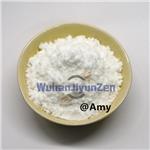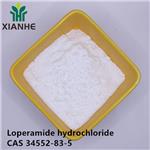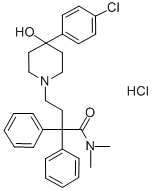Loperamide Hydrochloride: Therapeutic Antidiarrheal Use and Abuse Risks
Loperamide hydrochloride is used to control and relieve the symptoms of acute diarrhea. It is also used to treat chronic diarrhea in patients with inflammatory bowel disease. Loperamide helps stop diarrhea by slowing down the movements of the intestines. It is also used to decrease the amount of drainage in patients who have ileostomies. Loperamide capsules are available over-the counter or with your doctor's prescription. Loperamide hydrochloride (loe PER a mide) treats occasional diarrhea. It works by slowing down an overactive bowel, which decreases the number of bowel movements you have. It belongs to a group of medications called antidiarrheals. It is often used for a short period of time.

Formulation and Evaluation of Loperamide hydrochloride Oro Dispersible Tablets
Nowadays, Spain participates in sixteen international military missions with more than 2500 military personnel in four different continents. This means that potential military patients and local people could be in diverse scenarios including hazardous situations in which a bacterial infection or dehydration with diarrhoea could be a potential health risk. According to the pharmaceutical military medicines official list, there are various kind of chemical, biological, radiological and nuclear defence (CBRN) antidotes and strategical medicines in which the loperamide hydrochloride hard tablet is included, and it is also in the listings in the World Health Organization Model List of Essential Medicines. Loperamide HCl (4-[4-chlorophenyl]4-hydroxy-N-dimethyl-alpha,alphadiphenyl-1-piperidine-butanamide hydrochloride) is a synthetic antidiarrheal µ-opioid receptor agonist that primarily affects receptors in the intestine. Loperamide hydrochloride is efficacious in the treatment of diarrhoeas. Diarrhoea is by far the most common medical problem among people travelling to less developed tropical and subtropical countries. Travellers’ diarrhoea (TD) describes the symptoms of an intestinal infection caused by certain bacteria, parasites, or viruses. Loperamide HCl presents self-limiting adverse effects because of low oral absorption and the incapacity to cross the blood–brain barrier; both circumstances, together with short-term administration of the drug for most indications, explain its minimal central nervous system effects.[1]
An exhaustive market study was carried out to design an ODT Loperamide tablet by the Spanish Army Force according to consideration of the material, physicochemical, dust and bulk properties and API biopharmaceutical properties. The excipients were selected according to the pharmaceutical manufacturing experience of the Spanish Army Force. To support these strategy actions, a background information and literature review were done by searching the Medicine Online Information Centre of Spanish Agency of Medicines and Medical Devices and different kinds of official books. The excipients and their proportions were selected according to their function and due to technological aspects for a direct compression manufacturing process. Therefore, the excipients selected during the formulation stage were binding agents, lubricants, solvents, non-sticks, additives and superdisintegrants. Loperamide ODT selected formulas were formula for a 150 mg ODT was: Loperamide hydrochloride (1.33%) mannitol (42.67%), calcium hydrogen phosphate dihyhidrate (42.67%), sodium starch glycolate (5.00%), magnesium stearate (1.00%), sodium cyclamate (1.00%), menthol (0.33%), anise extract (1.00%), HPMC (5.00%). The slight reduction in the melting temperature of the drug can represent a physical interaction between both elements without indicating an incompatibility, because the average enthalpy value for the mixture is statistically equal to that found for Loperamide hydrochloride alone.
Loperamide hydrochloride abuse
At therapeutic doses (16 mg or less per day), Loperamide hydrochloride is an opioid with psychoactive effects that are limited by poor absorption when taken orally and active efflux from the central nervous system by the membrane transporter P-glycoprotein. Recreational use of Loperamide hydrochloride for its euphoric properities or to lessen symptoms of opioid withdrawal involves large oral dosages (more than 70 mg per day) with or without intentional ingestion of P-glycoprotein inhibitors such as quinine. Because of its opioid effects, nonprescription status and low cost, loperamide is sometimes referred to as “poor man’s methadone.” Of 179 cases of loperamide abuse reported to the United States National Poison Data System between 2008 and 2016, about half were reported after 2014; 137 (77%) involved men and the median age was 26 years.[2]
In addition to possible depression of respiratory and central nervous systems, supratherapeutic concentrations of Loperamide hydrochloride have been associated with QTc prolongation, QRS widening, ventricular dysrhythmias, syncope and sudden death. Loperamide is not detected by routine drug screens. Typically, a patient with Loperamide hydrochloride abuse will have a history of opioid misuse or recent discontinuation of prescription opioids and will present with unexplained syncope and electrocardiogram abnormalities. Supportive care is the mainstay of treatment. Naloxone has been used to reverse coma and respiratory depression. Optimal management of cardiac toxicity is unknown. Torsades de pointes should be treated with standard therapy, including magnesium and overdrive pacing. Sodium bicarbonate has been used for loperamide-related QRS widening, but its utility is unclear.
Loperamide hydrochloride cardiotoxicity
Loperamide hydrochloride is a popular antidiarrheal medication that has been used for many years. It is currently gaining more attention among healthcare professionals due to its increasing potential for side effects. At present, it is considered safe enough to be sold over the counter. In contrast with other opioid agonists, loperamide is a peripherally acting μ‐receptor agonist exerting its effects mainly on the myenteric plexus of the gastrointestinal longitudinal muscle layer. It decreases peristalsis and fluid secretion resulting in longer gastrointestinal transit time. The bioavailability of the drug is extremely low. Moreover, it is actively excluded from the central nervous system; hence, it lacks the central effects of euphoria and analgesia at the recommended dosages. Loperamide hydrochloride abuse has been steadily increasing in the United States. Abusers typically ingest high doses in desire to achieve a satisfactory central nervous system drug penetration. This has made it a potential over the counter substitute for self‐treating opioid withdrawal symptoms and achieving euphoric effects.[3]
References
[1]Alejandro B, Guillermo T, ángeles PM. Formulation and Evaluation of Loperamide HCl Oro Dispersible Tablets. Pharmaceuticals (Basel). 2020 May 18;13(5):100. doi: 10.3390/ph13050100. PMID: 32443638; PMCID: PMC7281284.
[2]Antoniou T, Juurlink DN. Loperamide abuse. CMAJ. 2017 Jun 12;189(23):E803. doi: 10.1503/cmaj.161421. PMID: 28606977; PMCID: PMC5468105.
[3]Akel T, Bekheit S. Loperamide cardiotoxicity: "A Brief Review". Ann Noninvasive Electrocardiol. 2018 Mar;23(2):e12505. doi: 10.1111/anec.12505. Epub 2017 Nov 10. PMID: 29125226; PMCID: PMC6931594.
See also
Lastest Price from Loperamide hydrochloride manufacturers

US $5.00-0.50/KG2025-05-07
- CAS:
- 34552-83-5
- Min. Order:
- 1KG
- Purity:
- 99% hplc
- Supply Ability:
- 500TONS

US $0.00/KG2025-05-06
- CAS:
- 34552-83-5
- Min. Order:
- 1KG
- Purity:
- 0.99
- Supply Ability:
- 1000KG


